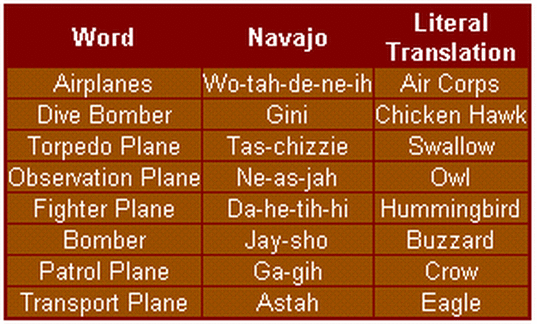Of late, I have been concerned about the introduction of " hate speech laws " and " misinformation laws. "
It got me thinking about the magnificent Navajo Code Talkers from World War II. When speaking in code, messages were passed and battles were won so that, in the war against evil. truth and justice could prevail.
During World War II, the United States military used a secret weapon that helped turn the tide of the war: Navajo Code Talkers. These were Native American soldiers from the Navajo tribe who played a critical role in transmitting top-secret military communications in an unbreakable code. The Code Talkers were crucial in the Pacific theatre, helping the allies defeat the Japanese and ultimately win the war.
The Navajo tribe, which is located in the southwestern United States, has a rich history and a unique language. The language was unwritten until the 1930s, when it was developed into a written form by a Navajo linguist named Carl Gorman. The language was so complex and difficult to learn that only a small number of non-Navajos were able to speak it fluently.
When the United States entered World War II in 1941, the military needed a way to transmit secret messages that the enemy could not understand. The use of code talkers had been successful in World War I, ( the United States used Native American code talkers from the Choctaw and Cherokee tribes. These code talkers played a significant role in transmitting sensitive information in their native languages, providing a means of secure communication that the enemy couldn't easily decipher.) and so the military turned to the Navajo tribe for help.
The Navajo Code Talkers were initially recruited by the Marines in 1942. The first group of 29 Navajo soldiers was sent to a special school in Camp Elliott, California, where they were trained to use their language as a code. The Code Talkers developed a code using the Navajo language that was so complex that even other Navajo speakers had difficulty understanding it.
The code was based on a system of substitution, where Navajo words were used to represent English letters or words. For example, the Navajo word for "ant" was used to represent the letter A, and the Navajo word for "bird" was used to represent the letter B. The Code Talkers also developed a system of grammatical rules to make the code even more difficult to decipher.

The Navajo Code Talkers were first deployed in the Pacific theatre in 1943. They served in every major battle, from Guadalcanal to Okinawa. They transmitted messages by telephone and radio, often under intense enemy fire. The Japanese were never able to break the Navajo code, and the Code Talkers played a critical role in the U.S. victory in the Pacific.
The Code Talkers also played a role in the D-Day invasion of Normandy. Although the Navajo language was not used in Europe, the Code Talkers were instrumental in developing other codes used by the Allies in the invasion.
After the war, the Navajo Code Talkers were sworn to secrecy and the code was classified. It wasn't until 1968 that the code was declassified and the Navajo Code Talkers were finally recognized for their contributions to the war effort. In 1982, President Ronald Reagan declared August 14th to be National Navajo Code Talkers Day.
The Code Talkers first saw action at the Battle of Guadalcanal in August 1942. They transmitted critical messages that helped coordinate the Marine attack on the Japanese forces. The Japanese were never able to break the Navajo code, which allowed the Marines to gain a critical foothold on the island.
I once managed to visit the Solomon Islands and saw the rusting landing craft on the shoreline, aircraft in the hills, long covered in jungle growth..... it was a very moving experience.
The Battle of Tarawa was a major amphibious assault by the U.S. Marines on the island of Betio in the Gilbert Islands. The Navajo Code Talkers played a critical role in coordinating the attack, transmitting messages that helped guide the Marines to their objectives. The battle was one of the bloodiest of the Pacific, but the use of the Navajo code helped the Marines achieve victory.
The Battle of Saipan was a major amphibious assault by the U.S. Marines on the island of Saipan in the Mariana Islands. The Navajo Code Talkers played a crucial role in the battle, transmitting messages that helped coordinate the attack and protect the Marines from Japanese counterattacks. The battle was a turning point in the Pacific theater and helped pave the way for the U.S. victory in the war.
The Battle of Iwo Jima was a major amphibious assault by the U.S. Marines on the island of Iwo Jima in February 1945. The Navajo Code Talkers played a critical role in the battle, transmitting messages that helped coordinate the Marine attack and protect them from Japanese counterattacks.
The battle was one of the bloodiest of the war, but the use of the Navajo code helped the Marines achieve victory.
Overall, the Navajo Code Talkers played a crucial role in many battles during the Pacific theatre of World War II. Their skills in transmitting top-secret military communications in an unbreakable code were essential in the U.S. victory in the war.


















































